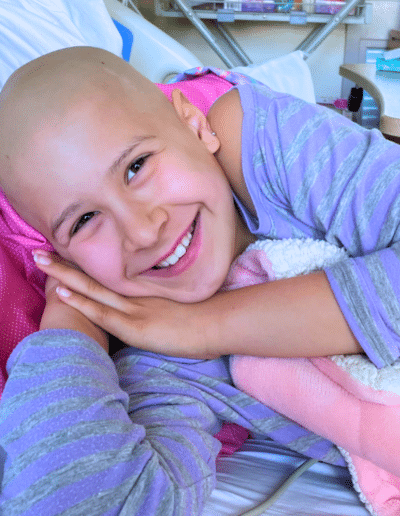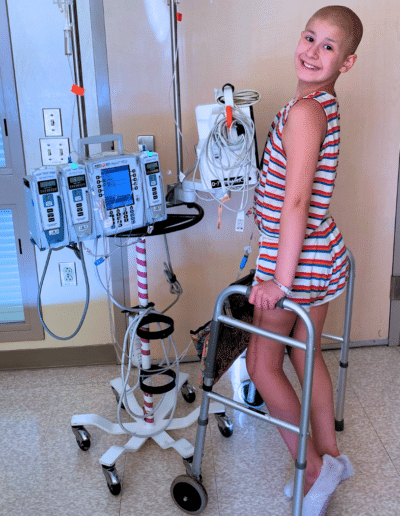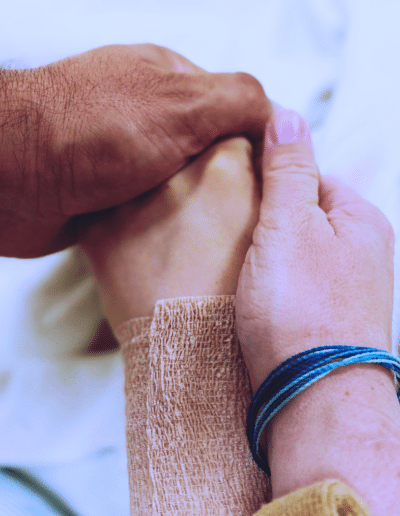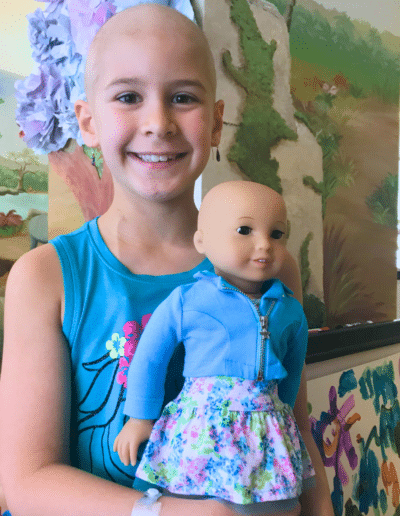

Help Us Fund Essential
Osteosarcoma Research
Lydia’s Story
Lydia battled osteosarcoma — twice. Now, she’s raising funds to find better treatments for other kids with bone cancer.
At age 7, Lydia had a painful lump on her thigh bone that her doctors found difficult to diagnose. Desperate for answers, Stephen and Jessica Alwan, Lydia’s parents, began casting a net to doctors and experts throughout California. “We had to trust our instincts,” says Jessica. “We kept asking questions and kept speaking up for Lydia. No one else was going to.”
Lydia’s family found an amazing surgeon and care team, which meant leaving their first hospital for another institution to get specialized care. Multiple rounds of chemotherapy and two limb salvage surgeries later, Lydia, now in high school, is cancer-free and thriving. The Alwan family is partnering with the Osteosarcoma Institute to raise much-needed funds for research. Please join us by donating today!
Donate Today
Osteosarcoma Statistics

Osteosarcoma is the most common childhood bone cancer.

No new treatments have been approved for osteosarcoma patients in 40 years.

1 in 3 children with osteosarcoma will not survive.
Patient Stories
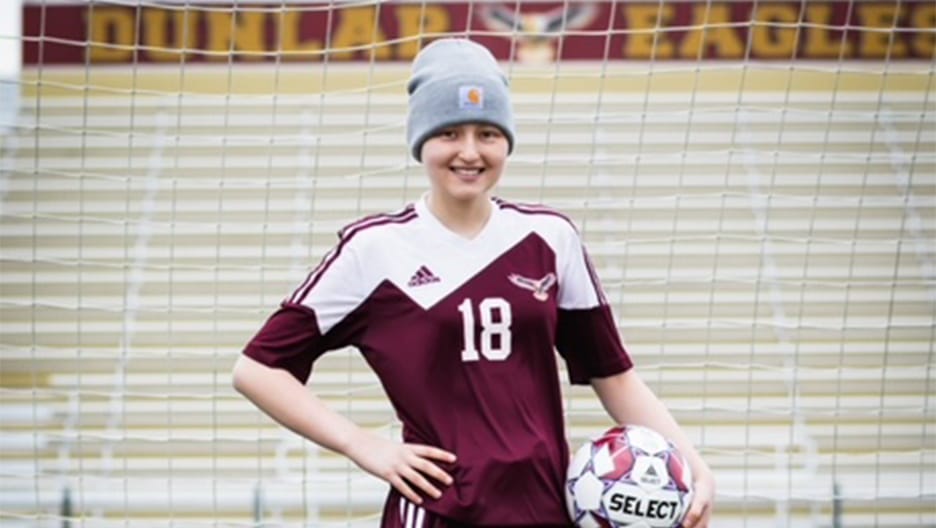
Teenage Soccer Star Takes on Osteosarcoma
It came as a shock when Tessa was diagnosed with extra-skeletal osteosarcoma, but this young athlete isn’t giving up without a fight.

A Mom Continues Her Daughter’s Fight Against Cancer
After Vicki Bunke lost her 14-year-old daughter, Grace, to osteosarcoma, she started swimming across America to honor her legacy.
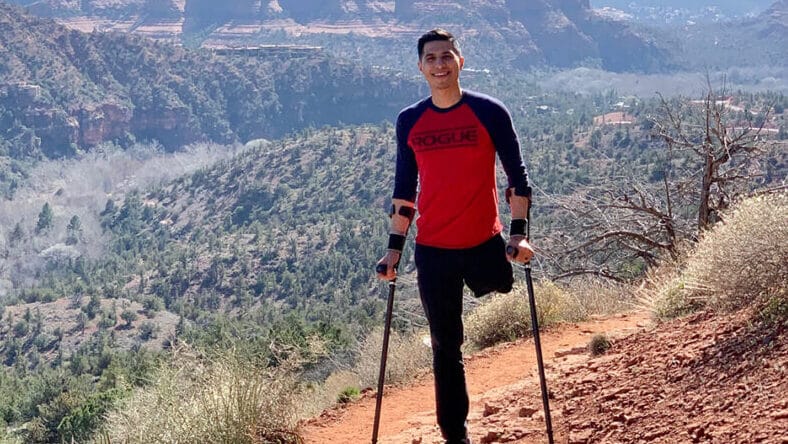
Two-time Osteosarcoma Survivor Never Let Cancer Define His Life
Carlos was diagnosed with osteosarcoma when he was 17 and again when he was 20. But, through it all, he never lost his passion for life.
What We Do
Our Strategy
Globally estimated, there are over 26,000 new cases of osteosarcoma diagnosed each year, with 1,000 being diagnosed in the US, but treatment options haven’t advanced in 40 years. To find a cure for osteosarcoma, we have to collaborate, innovate, and translate around the most promising science.
Our Mission
The Osteosarcoma Institute’s mission is to dramatically increase treatment options and survival rates in osteosarcoma patients through identifying and funding the most promising and breakthrough osteosarcoma clinical trials and science.
Institutional Collaborators
Our Impact
The OSI is the premier organization dedicated to funding and supporting research to improve outcomes for osteosarcoma patients. By collaborating with world-class researchers, clinicians, and institutions, we aim to accelerate the discovery of life-saving therapies.
$5,500,525
to Translational Science
$1,480,000
to Clinical Trials
$1,120,000
to Correlative Research
$521,329
to Discretionary Grants
To OSI, No New Options is Not an Option
The Osteosarcoma Institute’s mission is to dramatically increase treatment options and survival rates in osteosarcoma patients through identifying and funding the most promising and breakthrough osteosarcoma clinical trials and science.

Frequently Asked Questions
-
What is osteosarcoma?
Osteosarcoma is a type of bone cancer that originates in cells of the bone. The word “osteosarcoma” comes from the Greek words sarc, meaning fleshy substance, and oma, meaning growth. Osteo adds bone-like to the word sarcoma. It can occur anywhere along the skeleton, but the most common sites are in longer bones, for instance around the knee (distal femur and proximal tibia) and shoulder (proximal humerus).
-
How common is osteosarcoma?
Osteosarcoma is rare — only around 1,000 people are diagnosed in the United States each year. Osteosarcoma most commonly occurs in children, teenagers and young adults between the ages of 10 and 30. It is slightly more common in boys and young men. There is a peak incidence of osteosarcoma during the adolescent growth spurt. It is very rare in children under 5 years old.
-
What causes osteosarcoma?
The exact cause is still unknown. Osteosarcoma develops when healthy cells responsible for making new bone experience changes in their DNA. These DNA changes tell the cells to make abnormal bone. This results in a tumor that invades and destroys surrounding healthy bone and surrounding tissue.
-
Can osteosarcoma be prevented?
It cannot be prevented. However, there are certain risk factors to be aware of. Osteosarcoma risk factors include:
● Bone disorders (Paget’s disease and fibrous dysplasia)
● Exposure to radiation (for example, previous cancer treatment)
● Rare, inherited disorders (hereditary retinoblastoma, Bloom syndrome, Li-Fraumeni syndrome, Rothmund-Thomson syndrome and Werner syndrome) -
What are the symptoms?
People with osteosarcoma may have a variety of symptoms, including:
● Pain in and around a bone that becomes persistent and severe over time
● Swelling near a bone
● Limping and/or inability to lift or use a limb
● Bone injury/fracture from minor trauma
If you or your child is experiencing any of the above symptoms, contact your doctor. -
How is osteosarcoma diagnosed?
The diagnosis of osteosarcoma can only be definitively made with a biopsy of the affected area. Thanks to advanced imaging technology, doctors can see — with precision — where the abnormality is located in the body and help guide the biopsy. Once a biopsy confirms the diagnosis of osteosarcoma, a variety of other tests may be ordered to further determine the extent of the tumor. These may include:
● X-Ray
● Computed tomography (CT) scan
● Magnetic resonance imaging (MRI)
● Positron emission tomography (PET) scan
● Additional blood tests
-
Can osteosarcoma spread?
Yes, osteosarcoma can metastasize, or spread, to other areas of the body, most commonly to the lungs. Osteosarcoma that spreads to the lungs happens when tumor cells travel to the lungs through the bloodstream. But since our blood always travels to the lungs to provide oxygen to our blood (and not all cancers spread to the lungs first), there must be additional reasons that osteosarcoma is so prone to lung metastases. This is an area of active research.
-
What are the treatment options for osteosarcoma?
Current therapy for osteosarcoma almost always includes the combination of a standard chemotherapy treatment and surgery. Most commonly, chemotherapy is given for several months before surgery and is continued after the patient has recovered from their surgery. The type of surgery performed can vary, but usually includes limb-preservation surgery. Following recovery from surgery, patients begin physical rehabilitation as part of their recovery process.
-
What should I know about clinical trials?
Clinical trials are available, if and when a patient recurs, following standard treatment. These trials provide patients access to novel treatment methods and drug therapies that are being developed to treat osteosarcoma. Depending on your individual case, you may be eligible to participate in one. The Osteosarcoma Institute is pleased to connect you with a free and confidential clinical trial matching service. Most clinical trials for osteosarcoma include newer “targeted therapy drug” or combinations with immunotherapy.
-
What are treatment side effects?
With any cancer treatment, there are side effects. This is also true for osteosarcoma treatment. Surgery often involves use of an internal prosthesis and rarely an external prosthesis. Physical therapy will be provided as you heal to help guide rehabilitation and ensure strength and movement are regained in the safest way possible. Chemotherapy side effects can include hair loss, nausea, fatigue, weakness, loss of appetite and weight loss. These side effects will resolve when chemotherapy is completed.
-
What is the outlook for people with osteosarcoma?
The outlook depends on many factors, including the location and size of the tumor, whether the cancer has spread and the person’s age and overall health. For more information on osteosarcoma survival rates, click here.
-
Why is more research needed?
There have been no improvements in survival of osteosarcoma patients for more than 30 years. Osteosarcoma is complex, and more research is needed. For a brief history of osteosarcoma treatment, click here. Areas of research include gene therapy, targeted drug therapy and immunotherapy.
